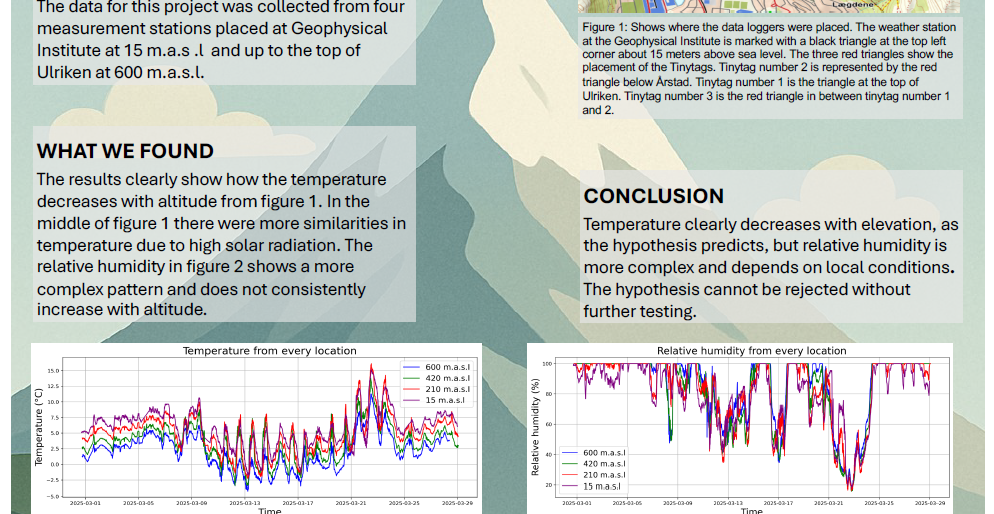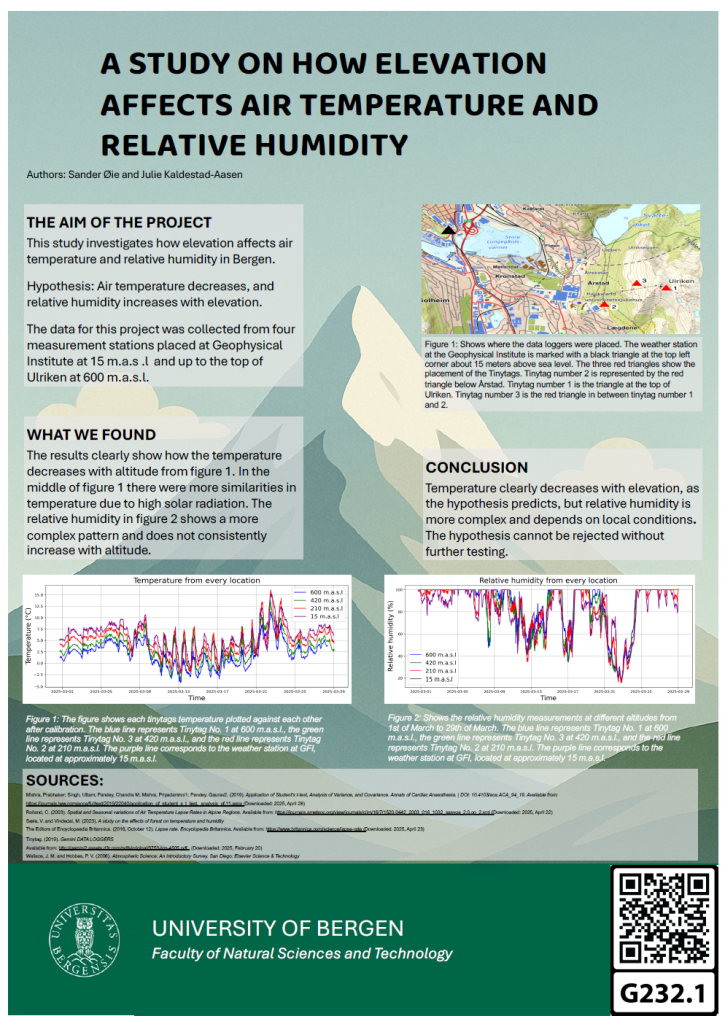Abstract
This study investigates the effects of elevation on air temperature and relative humidity in Bergen, Norway. The primary hypothesis is that temperature decreases and relative humidity increases with altitude, in accordance with the atmospheric lapse rate. Data was collected between February 28 and March 29, 2025, using three Tinytag loggers and an Automatic Weather Station positioned at four elevations ranging from 15 to 600 meters above sea level. The collected data included temperature, relative humidity and dew point. Linear regression and a statistical test were used to analyze the data. The results show a clear decrease in temperature with increasing elevation, supporting the lapse rate theory. The trend in relative humidity was less consistent, and the results did not support the hypothesis. However statistical analysis suggests that the observed variations are likely due to random factors rather than a true effect of elevation. This means the hypothesis cannot be dismissed without further testing. Local topography and environmental factors, such as vegetation and terrain, are identified as possible influences on the data. Overall, the study confirms a negative correlation between temperature and elevation, while the relative humidity is more complicated. This research provides valuable insights into vertical atmospheric gradients, contributing to a better understanding of how local environmental factors affect temperature and humidity profiles.
Poster number:
G232.1
Authors:
Julie Kaldestad-Aasen
& Sander Øie


